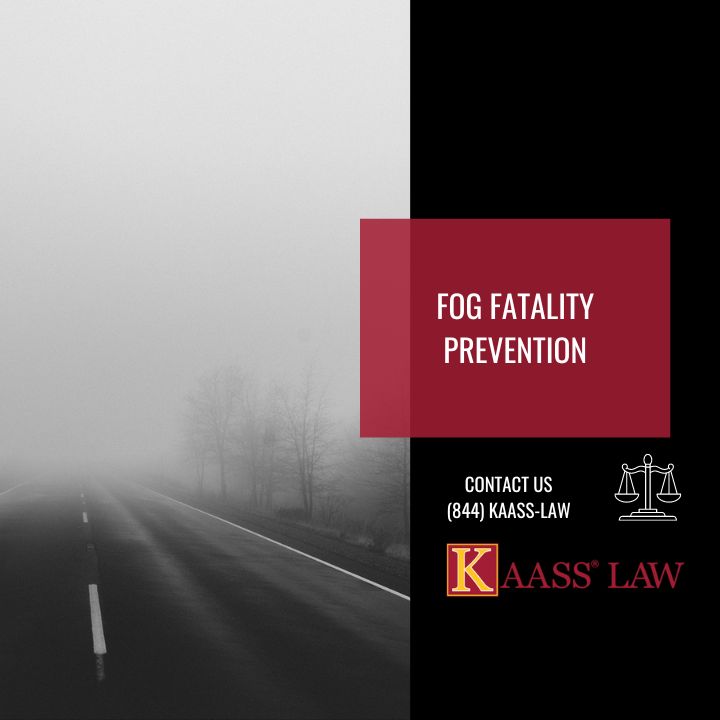Fog diminishes vision, restricts contrast, confuses perception, and causes countless traffic accidents and wrongful death. A fog fatality is more common that one may believe and it is important to understand what steps you may take to decrease your chances in putting you or someone else in danger. In essence, it reduces your ability to see other cars and things on the road, therefore you must drive with extreme caution. The suspension of extremely small moisture droplets in the air causes fog. Light scatters as it strikes these droplets, resulting in a lack of contrast and a thick white backdrop. When these particles become smaller, fog thickens and blankets the roads even more. As a result, drivers cannot see very far ahead, and automobile accidents become more likely than usual. As vehicle accident attorneys, we question whether cars should be driven in foggy weather with zero or minimal visibility.
Thick fog on the road can be hazardous, especially if it is exceptionally dense or paired with other severe weather conditions. It’s best to pull over into a parking lot while the fog clears. Here are some suggestions for when you must continue driving.
Ways to Prevent a Fog Fatality
While fog creates hazardous driving conditions, there are techniques to avoid a vehicle collision in these conditions.
- Give yourself plenty of time. It is preferable to be late than to rush and risk an automobile accident.
- If feasible, turn on your fog lights. Most experts feel that yellow and green lights reflect less light than white lights. White lights encompass all colors (more wavelengths), and specialists have discovered that using a single wavelength (yellow, green, or blue) allows for less reflection.
- Use utmost caution when driving. Leave more space between you and the automobile in front of you. Always drive slower than the official speed limit since these conditions necessitate slower speeds.
Fog has Effects on Driver Perception.
- It alters your sense of speed. Because of the reduced contrast, you may believe that an item is moving slower than it actually is. This also applies to your own speed, since you will be unable to evaluate it based on your surroundings. You can’t even see what’s around you! If you must drive in the fog, we strongly advise you not to speed. Even if the speed restriction is 50 mph, this does not imply that you should drive at that pace. In reality, speed restrictions are intended for driving under ideal conditions. When the weather is bad, you may drive at a slower speed than usual.
- You will have difficulty differentiating between fixed and moving objects. You will have difficulties distinguishing between parked and moving vehicles. If you are not cautious, this might easily lead to an accident.
- You can underestimate the distance. Humans have an inherent perception that fuzzy objects are further away than clear ones. Since fog reduces contrast and clouds your vision, you are more likely to underestimate how far away another automobile or stationary object is, increasing the likelihood of a car collision.
- Cloudy situations might be exacerbated further by incorrect logic. If you’re driving at night in the fog, you could consider using your fog lights. However in some cases, rather than enhancing visibility, as you might expect, utilizing your high beams will just scatter more light back at you.
Contact a Los Angeles Attorney Today
Most adverse weather driving circumstances, including foggy weather, require attention to avoid a car collision. While the number of automobile accidents increases during fog, many drivers get at their destination safely. As wrongful death and accident attorneys, we believe that a careful driver is a safe driver. If you were injured or know someone who wrongfully died in an automobile accident in foggy circumstances, call us right away at 310.943.1171. Visit our other page to learn more about potential cases you may have.

